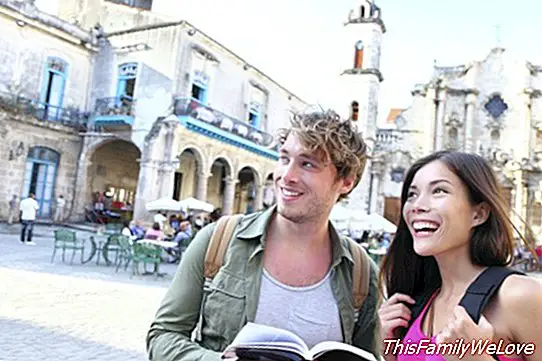Orange tourism: beyond the cultural journey
The tourist looks for new ways to travel, adapt and experiment. Within this new line of search for new experiences in travel, which pretend to be and be, rather than visiting, the new orange tourism, a model of participation in local life where the objective is to connect and feel integrated into the culture that is visited.
The phenomenon baptized as Orange tourism is a new version of colorful tourism. So green tourism refers to trips related to nature and ecology, blue tourism to water sports, white tourism covers all trips related to skiing and winter sports and the pink is linked to the LGTB community.
Orange tourism goes beyond the cultural journey, because it consists in immersing oneself and living in the first person the vicissitudes of the culture that one visits. Precisely, Crispin Raymond and Greg Richards have defined this type of tourism as "that offers visitors the opportunity to develop their creative potential through active participation in courses and learning experiences of the holiday destination where they are developed".
Tourism proposals orange
The orange tourism It proposes what experiences a visitor should not miss in order to connect with the inhabitants of that place and feel integrated within the local culture. Blowing Venetian glass pieces if you visit Italy, learn how to make croissants in the French capital, control asps with a Hindu fakir in India or go fishing in Portugal are just some examples of the activities demanded by orange tourists.
Main advantages of orange tourism
1. Diversification of the tourist offer of a destination and even the possibility of opening up to quality tourism, optimizing existing material and immaterial resources (traditions, crafts, empowerment of local artists, etc.).
2. Expansion of cultural interests. The interest of orange and creative tourists for culture, in general, and that of their destination, in particular, goes beyond visits to tourist sites. They want to "experience" it and know how its inhabitants do it.
3. Timelessness Orange tourism does not have seasons or climate preferences, it allows many destinations to develop their tourism activity throughout the year, without depending on good weather.
4. Combination of different modalities. Orange tourism blends perfectly with other tourism segments such as gastronomic tourism, the idiomatic, the wine tourism, the slow tourism... In short, it is a mode in full expansion that gathers more followers every day.
The millennials, the most interested in orange tourism

Millennials are the users who demand this way of knowing new places, in particular 47% of them think that in ten years they will want to have culinary and cultural experiences, and 1 in 3 bet to know the great tourist destinations of the world, according to An international study on travel habits conducted by OpinionWay. In addition, this generation seeks unique trips in destinations that have not yet been discovered by mass tourism.
For Carlos Martínez, CEO of IMF International Business School, "in the current tourism sector we need demanding and trained professionals, as tourists are increasingly prepared, want to know other destinations and compare not only the price but the experiences. producing many changes, an evolution that demands professionals who master the new technologies and who are willing to continue advancing and innovating at the same time as the sector does ".
The great moment of Spanish tourism
Spanish tourism is experiencing a sweet moment thanks to the optimism of the figures. Thus, according to data from the National Institute of Statistics (INE), Spain has received more than 60 million tourists in the first nine months of the year, 10.1% more than in the same period of 2015. The sector in Spain is heading to achieve a new record of over 70 million tourists in 2016. There is no doubt that the sector is adapting to the new demands of today's tourists, who no longer seek a destination but to live unique and authentic experiences during their vacations.
Marisol Nuevo Espín
Advice: Carlos Martínez, CEO of IMF International Business School andRafael Mesa, Manager of Sector Development of Tourism of IMF.
It may interest you:
- Cultural trips with children, how to make this tourism attractive
- Family trips: 10 places to visit in Europe
- The 10 best ski resorts for families
- Travel to Portugal with children and family
- Enjoy the religious art routes in Valencia with Turiart




